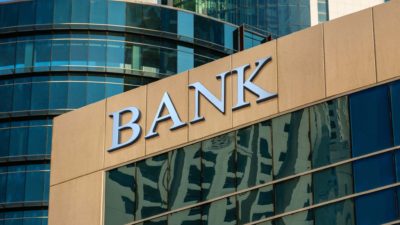For many years, the Commonwealth Bank of Australia (ASX: CBA) dividend has boosted the wealth of millions of Aussies as one of the most popular shares held among individuals and super funds. But does it still make sense for those on the hunt for the best income?
At the final bell on Wednesday, shares in Australia's largest retail bank finished 0.4% lower at $101.70. Meanwhile, the S&P/ASX 200 Index (ASX: XJO) fell a deeper 0.74% during a rough day for materials.
Based on the closing price, CBA shares now trade on a trailing dividend yield of 4.3%. For context, the dividend yield of the ASX 200 benchmark is calculated to be 4.1%. So, already, shareholders know the CBA dividend is generating a higher return than the broader index.
However, is it competitive against other ASX 200 bank shares?
Which ASX 200 bank pays the most?
I've compiled a list of all the ASX-listed banks that are included in the ASX 200 index. It turns out there are only ten bank shares among the top 200 listed companies. It is a small collection considering the sector's enormous composition in the benchmark based on market capitalisation.
A quick inspection of the table below shows CBA does not currently offer the highest dividend yield. As a matter of fact, we must work our way down to the eighth spot on the list to find the gold-emblazoned bank.
| ASX-listed bank | Share price | Dividend yield | Payout ratio |
| Bank of Queensland Ltd (ASX: BOQ) | $5.77 | 7.6% | 132% |
| Bendigo and Adelaide Bank Ltd (ASX: BEN) | $9.10 | 6.6% | 69% |
| Virgin Money UK (ASX: VUK) | $3.13 | 6.2% | 36% |
| Westpac Banking Corp (ASX: WBC) | $21.52 | 6.2% | 73% |
| ANZ Group Holdings Ltd (ASX: ANZ) | $25.38 | 6.1% | 63% |
| National Australia Bank Ltd (ASX: NAB) | $28.98 | 5.5% | 68% |
| Suncorp Group Ltd (ASX: SUN) | $13.76 | 4.4% | 66% |
| Commonwealth Bank of Australia (ASX: CBA) | $101.62 | 4.3% | 75% |
| Macquarie Group Ltd (ASX: MQG) | $171.93 | 4.2% | 55% |
| AMP Ltd (ASX: AMP) | $1.28 | 3.9% | -333% |
The top spot, instead, goes to the Bank of Queensland — touting a gargantuan dividend yield of 7.6%.
However, with a payout ratio of 132%, it appears the Brisbane headquartered bank paid out more than it earned in the last year. This means future payments of a similar size may be in jeopardy in the future unless the bank can increase its earnings.
Interestingly, all of the other Big Four peers outcompeted CBA on dividend yield. The highest being Westpac, with a yield of 6.2%. Moreover, they are all carrying lower payout ratios than big yellow.
Is the CBA dividend yielding more than it did in the past?
For the diehard CBA shareholders, comparing the banking giant to itself might be more helpful.
At its current 4.3%, the Commonwealth Bank is offering its poorest yield in more than 18 years (excluding COVID). The last time the CBA dividend was even close to this low yield was in 2007, when the world was in the grips of the global financial crisis.
Yet, the bank is paying the most in annual dividends per share in its history.
How does that stack up?
Essentially, the CBA share price has outrun its dividend growth, compressing its yield.
As of right now, CBA shares trade on a price-to-earnings (P/E) ratio that has only been witnessed briefly in 2021, 2019, 2010, and 2007.








